| 6 June |
• yesterday • tomorrow |
| Optional Memorial of Saint Norbert, Bishop |
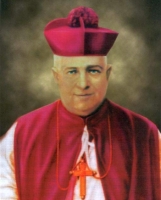
One of eleven children born to Prudenzio Guizar and Natividad Valencia, wealthy and pious land owners. Ordained in 1901. Conducted missions throughout Mexico. Founded the Congregation of Missionaries of Our Lady of Hope in 1903. Apostolic missionary in 1905. Spiritual director in the major seminary of Zamora, Mexico. Used his family's money to found a school for poor girls. Founded two colleges for boys.
In 1911 a state persecution of the Church began. His Congregation was dissolved and his missionary work was prohibited, so Father Raphael continued his work illegally. He founded a Catholic magazine in Mexico City, which the government quickly shut down. Raphael went on the road, disguised as a travelling merchant or musician, ministering to the poor and preaching when he could. He was shot at several times by soldiers, and condemned to death in absentia. In 1916 the authorities were so close on his trail that Raphael fled Mexico, first to the United States and then to Guatemala where he spent a year preaching missions. Preached in Cuba from 1917 to 1919. Named bishop of Veracruz-Jalapa, Mexico on 1 August 1919; he received word of the appointment while preaching in Havana. He continued his missionary work in Colombia, but finally returned to Veracruz, Mexico on 4 January 1920.
The government persecution of the Church escalated. The diocesan seminary was shut down; Bishop Raphael transferred his students to Mexico City and continued their training covertly. In 1931 Governor Tejada of Veracruz decreed that there could only be one priest per 100,000 Catholics; Raphael shut all his churches in protest. Tejeda ordered that Raphael be shot on sight; Raphael went straight to the governor's palace and walked into his office. Tejeda feared the uprising that killing such a man would cause, and revoked the death sentence; Raphael spent the rest of his days fighting to continue the work of the Church in the face of government opposition.
26 April 1877 at Cotija, Michoacan, Mexico
6 June 1938 in Mexico City, Mexico of natural causes
15 October 2006 by Pope Benedict XVI
The Gospel that we have heard helps us to understand the figure of Saint Rafael Guízar y Valencia, Bishop of Vera Cruz in the beloved Mexican Nation, as an example of one who has left all to "follow Jesus". This Saint was faithful to the divine Word, "living and active", that penetrates the depth of the spirit (cf. Hebrews 4:12). Imitating the poor Christ, he renounced his goods and never accepted the gifts of the powerful, or rather, he gave them back immediately. This is why he received "a hundred fold" and could thus help the poor, even amid endless "persecutions" (cf. Mark 10:30). His charity, lived to a heroic degree, earned him the name, "Bishop of the poor". In his priestly and later episcopal ministry, he was an untiring preacher of popular missions, the most appropriate way at the time to evangelize people, using his own "Catechism of Christian Doctrine". Since the formation of priests was one of his priorities, he reopened the seminary, which he considered "the apple of his eye", and therefore he would often say: "A Bishop can do without the miter, the crosier and even without the cathedral, but he cannot do without the seminary, since the future of his Diocese depends on it". With this profound sense of priestly paternity he faced new persecutions and exiles, but he always guaranteed the formation of the students. The example of St Rafael Guízar y Valencia is a call to his brother Bishops and priests to consider as fundamental in pastoral programs, beyond the spirit of poverty and evangelization, the promotion of priestly and religious vocations, and their formation according to the heart of Jesus! - Pope Benedict XVI, from the canonization homily of Saint Raphael
https://catholicsaints.info/saint-rafael-guizar-y-valencia/
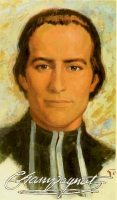
Entered the seminary at age 16. Student with Saint John Marie Vianney. Ordained in 1816. Founded the Little Brothers of Mary (Marists) in 1817 mainly involving boys in their late teens with a great devotion of Our Lady who wanted to teach and help bring the Word to other young men. Today there are about 5,000 Marist Brothers in 72 countries; their slogan A Heart Without Borders.
20 May 1789 at Hameau du Rosey, Lyon, France
6 June 1840 in in Saint-Chamond, Loire, France of natural causes
• 29 May 1955 by Pope Pius XII
• the investigation included the October 1939 cure of Mrs Georgina Grondin from a malignant tumour in Waterville, Maine, USA, and the 12 November 1941 cure of John Ranaivo from cerebrospinal meningitis, in Antsirabe, Madagascar
• 18 April 1999 by Pope John Paul II
• the investigation include the July 1976 cure of Brother Heriberto Weber Nellessen, in Montevideo, Uruguay
To educate the children well, we must love them, and love them all equally. - Saint Marcelino
To educate a child...is to make him a good Christian and a good citizen. - Saint Marcelino
If it were only a question of teaching human knowledge to the children, there would be no need for Brothers, since lay teachers can do this work. If we are to give only religious instruction, we would be content to be simply catechists, and to bring the children together for only one hour a day. But we want to do more than this - we want to educate the children, that is, to give them an integrated education. To do this, we must be educators, we must live with the children, and they must spend a lot of time with us. - Saint Marcelino
I can never see a child...without wanting to tell him how much Jesus Christ loves him. - Saint Marcelino
To make Jesus Christ known and loved - this is the whole aim of your vocation and the objective of the Institute. - Saint Marcelino
A Brother is a mirror of the Gospel. - Saint Marcelino
All the dioceses of the work come within the scope of our work. - Saint Marcelino
All to Jesus through Mary, all to Mary for Jesus. - Saint Marcelino
Saint Marcelino announced the Gospel with an ardent heart. He was sensitive to the spiritual and educational needs of his time, especially the prevailing religious ignorance, and the abandonment which youth were experiencing...he was a model for all parents and educators to help them look upon youth with hope, to encourage them with total love, which will make a true human, moral and spiritual formation possible. - Pope John Paul II
https://catholicsaints.info/saint-marcellin-joseph-benoit-champagnat/
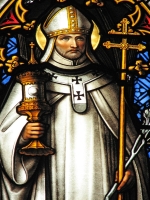
• Norbert of Kingdown
• Norbert of Magdeburg
Born to the nobility, Norbert was raised around the royal court and served as almoner for Emperor Henry V. In the court he developed a very worldly view, and took holy orders as a career move, joining the Benedictines at Siegburg. A narrow escape from death led to a conversion experience, and he began taking his vows seriously. He tried to reform his order's local house, then became a wandering preacher. He founded a community of Augustinian canons at Premontre, France; they became known as the Norbertines or Premonstratensians, and started a reform movement that swept through European monastic houses.
Friend of Blessed Godfrey of Cappenberg. Archbishop of Magdeburg, Germany. Reformed the clergy in his see, using force when necessary. Worked with Saint Bernard of Clairvaux and Saint Hugh of Grenoble to heal the schism caused by the death of Pope Honorius II. Fought heresy in Cambrai, France with the help of Saint Waltmann.
c.1080 at Xanten, Germany
• 6 June 1134 at Magdeburg, Germany
• relics in Prague
1582 by Pope Gregory XIII
• against birth complication
• for peace
• Bohemia
• archdiocese of Magdeburg, Germany
• monstrance
• cross with two cross-bars
Norbert established a clergy dedicated to the ideals of the Gospel and the apostolic Church. They were chaste and poor. They wore the clothing and the symbols of the new man; that is to say, they wore "the religious habit and exhibited the dignity proper to the priesthood." Norbert asked them "to live according to the norms of the Scriptures with Christ as their model. The priests lived in community, where they continued the work of the apostles. When Norbert was appointed as archbishop, he urged his brothers to carry the faith to the lands of the Wends. Faith was the outstanding virtue of Norbert's life, as charity had been the hallmark of Bernard of Clairvaux. Affable and charming, amiable to one and all, he was at ease in the company of the humble and the great alike. Finally, he was a most eloquent preacher; after long meditation he would preach the word of God and with his fiery eloquence purged vices, refined virtues and filled souls of good will with the warmth of wisdom. - from the life of Saint Norbert
https://catholicsaints.info/saint-norbert-of-xanten/
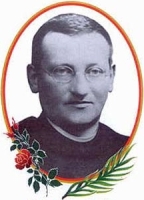
Innocent, Innocenty
12 June as one of the 108 Polish Martyrs of World War II
After high school Jozef tried to join the Jesuits, but was turned down. On 25 August 1908 be joined the Franciscans, taking the name Innocenty. Studied philosophy and theology in Krakow, Poland. Ordained on 2 June 1914. Parish priest in a number of cities, and worked with Saint Maximilian Kolbe. Confessor to a Franciscan monastery at Niepokalanów, Poland from 1933 to 1936. Vice-master of clerics and singing teacher in the minor seminary. Parish priest in Grodno, Poland. Imprisoned by invading Russia troops on 21 March 1940 for the crime of being a Polish priest, but he managed to escape. Captured by invading German troops, he was sent to several prisons for the crime of being a priest before finally ending at the concentration camp at Sachsenhausen where he was severely beaten and put to forced labour; when he could not work, owing to a broken leg, he was nearly drowned and finally murdered. Martyr.
8 March 1890 in Lwów, Poland (modern L'viv, L'vivs'ka oblast', Ukraine)
from trauma resulting from having a charged fire hose stuffed down his throat on 6 June 1940 in the prison camp at Sachsenhausen-Oranienburg, Oberhavel, Germany
13 June 1999 by Pope John Paul II at Warsaw, Poland
https://catholicsaints.info/blessed-jozef-wojciech-guz/

Bertrando, Bertrichramnus
Studied civil and canon law at the University of Toulouse. Priest. Dean of the cathedral chapter of Angouleme, France in 1316. Canon of Saint Felice in Toulouse, France in 1318. Archdeacon of Noyon, France. Papal chaplain. Taught law at the University of Toulouse. Worked for the canonization of Saint Thomas Aquinas. Papal diplomat.
Patriarch of Aquileia, Italy on 4 July 1334. Noted for his austere lifestyle, he founded monasteries to promote learning, encouraged the work of the Benedictines, Franciscans and Dominicans, spent largely on charity for the poor, and worked for the moral reform in his diocese. Supported the olive and wool trade in his region as a way to improve the lives of his people. Convened a council of bishops in Udine, Italy in 1335, and in Aquileia in 1339. Murdered for defending the rights of the Church against local nobles, and is thus considered a martyr.
c.1260 at Saint Geniès, Quercy, Aquitaine, France
• 6 June 1350 at San Giogio Richionvelda
• buried in Udine, Italy
• relics enshrined in the Udine cathedral choir
1760 by Pope Clement XIII (cultus confirmation)
https://catholicsaints.info/saint-bertrand-of-aquileia/
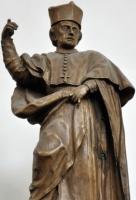
Gilbert of Auvergne
Born to the nobility of Aquitaine. Married to Petronilla, father of Pontia. Fought in the Crusades with King Louis VII from 1146 to 1149. When he returned home he convinced his wife and family to let him follow a call to religious life. Hermit. Premonstratensian monk. Founder and abbot of the Premonstratensian monastery at Neufontaines, which was noted for its hospital where Gilbert cared for the sick.
late 11th century in Auvergne, Aquitaine (in modern France)
• 6 June 1152 at Neuffonts, Auvergne, Aquitaine (in France) of natural causes
• some relics taken to the Premonstratensian college in Paris, France in 1615
https://catholicsaints.info/blessed-gilbert-of-neufontaines/
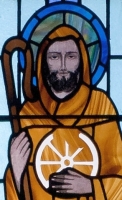
Iarlaith, Iarlath
Born to the Irish nobility. Studied under Saint Benignus. Priest. Founded a monastery and college at Cluain Fois outside Tuam, Galway, Ireland, and is considered the founder of the diocese. The school attracted scholars from all over Ireland, including Saint Brendan of Ardfert and Saint Colman of Cloyne. Abbot-bishop of the monastery-school. Spiritual student of Saint Enda of Arran. Prophet.
c.445 at Connaught, Galway, Ireland
• c.540 of natural causes
• relics at Kilmainemore, Ireland
archdiocese of Tuam, Ireland
https://catholicsaints.info/saint-jarlath-of-tuam/
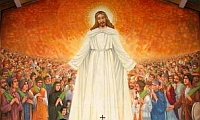
Peter
24 November as one of the Martyrs of Vietnam
Married layman in the apostolic vicariate of Central Tonkin (in modern Vietnam). Fisherman by trade. During the persecutions of emperor Tu Duc, he was ordered to stomp on a cross to show his contempt for Christianity; he refused. Martyr.
c.1802 in Ðông Hào, Thái Bình, Vietnam
burned at the stake on 6 June 1862 in Nam Ðinh, Vietnam
19 June 1988 by Pope John Paul II
https://catholicsaints.info/saint-phero-thuan/

Peter
24 November as one of the Martyrs of Vietnam
Married layman in the apostolic vicariate of Central Tonkin (in modern Vietnam). Fisherman by trade. During the persecutions of emperor Tu Duc, he was ordered to stomp on a cross to show his contempt for Christianity; he refused. Martyr.
c.1800 in Ðông Hào, Thái Bình, Vietnam
burned at the stake on 6 June 1862 in Nam Ðinh, Vietnam
19 June 1988 by Pope John Paul II
https://catholicsaints.info/saint-phero-dung/
Falcone
Educated at the Benedictine monastery of Holy Trinity in Cava dei Tirreni, Italy. Spiritual student of Saint Peter of Pappacarbone. Monk at Cava, and prior of the house. Abbot of Saint Mary's at Cirzosimo. Abbot of Cava in 1141. Noted expert in canon law. Advisor to Norman king Roger II. Regional bishops deferred to him on matters of law, canon and civil.
• 6 June 1146 of natural causes
• relics enshrined at the altar of Saint Catherine
• relics moved to a marble reliquary in the chapel of the Holy Fathers in 1675
16 May 1928 by Pope Pius XI (cultus confirmed)
https://catholicsaints.info/blessed-falco-of-cava/

Peter
24 November as one of the Martyrs of Vietnam
Married layman in the apostolic vicariate of Central Tonkin (in modern Vietnam). Fisherman by trade. During the persecutions of emperor Tu Duc, he was ordered to stomp on a cross to show his contempt for Christianity; he refused. Martyr.
c.1821 in Doãn Trung, Thái Bình, Vietnam
burned at the stake on 6 June 1862 in Nam Ðinh, Vietnam
19 June 1988 by Pope John Paul II
https://catholicsaints.info/saint-vinh-son-duong/
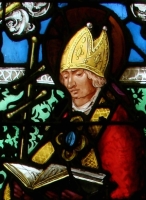
• Claudius the Thaumaturge
• Claudius the Miracle Worker
• Claude...
Priest. Monk. Abbot of Condat, Jura; his house later became known as Saint-Claude. Bishop of Besançon, France in 685. He resigned his see in 692 to return to life as a cloistered monk at Saint Oyand-de-Joux Abbey. Known for his love as literature.
in Franche-Comté, France
c.699
• wood turners
• Franche-Comté, France
https://catholicsaints.info/saint-claudius-of-besancon/

25 September as one of the Holy Bishops of Milan
Priest in Rome, Italy. Bishop of Milan, Italy in 512. Spent hugely to ransom Christians who had been abducted by invading barbarians.
• 6 June 518 of natural causes
• interred in the chapel of Saint Sixtus, basilica of Saint Lorenzo Maggiore, Milan, Italy
https://catholicsaints.info/saint-eustorgius-ii-of-milan/
Cerato, Cerazio
Bishop of Grenoble, France c.440. Attended the Council of Orange in 441. Several stories and conjectures, many conflicting, have become attached to Saint Ceratius, but we have no evidence to support them.
c.400
5th century of natural causes
• 1903 (cultus confirmed)
• the celebration of his memorial on 6 June dates from the 6th century
https://catholicsaints.info/saint-ceratius-of-grenoble/
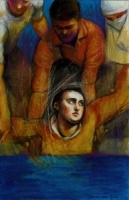
Bishop of Fiesole, Italy. Defended the rights and authority of the Church against the kings of Lombardy. When he refused give in to the lay authorities and put their choices in positions of power for political reasons, his opponents ambushed and murdered him.
drowned in 590 in the River Reno near Bologna, Italy
https://catholicsaints.info/saint-alexander-of-fiesole/
4 May as one of the Carthusian Martyrs
A lay brother in the Carthusian London Charterhouse. Arrested for opposing the policies of King Henry VIII, and remaining loyal to Rome. Martyred with six companions.
English
starved to death on 6 June 1537 at Newgate Prison, London, England
20 December 1886 by Pope Leo XIII
https://catholicsaints.info/blessed-william-greenwood/
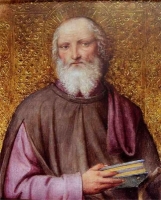
Well off layman in Monza, Lombardy, Italy. He spent his wealth founding a hospital in Monza where he worked with the sick, especially lepers.
1207 of natural causes
1582 by Pope Gregory XIII (cultus confirmed)
Monza, Italy
bowl; cherries
https://catholicsaints.info/blessed-gerard-tintorio/
Curval, Gudwal, Gurval, Gurwall, Gudual, Guidgal, Goual
Monk. Abbot of a monastery on the isle of Plecit. Bishop. Founder of monasteries in Devon and Cornwall in England, and in Brittany, France.
6th century Wales
• 6th century of natural causes
• relics at Ghent, Belgium
Guern, France
https://catholicsaints.info/saint-gudwall/
Paolina
Daughter of Saint Artemius of Rome and Saint Candida of Rome. Convert, brought to the faith by Saint Peter the Exorcist and baptised by Saint Marcellinus. Martyr.
buried alive under a pile of stones in 302
https://catholicsaints.info/saint-paulina-of-rome/
Artemio
Married to Saint Candida of Rome; father of Saint Paulina of Rome. Jailer. Convert, brought to the faith by Saint Peter the Exorcist and baptised by Saint Marcellinus. Martyr.
beheaded in 302
https://catholicsaints.info/saint-artemius-of-rome/
Refugee to France in his youth, escaping the Moorish invasions of Spain. Priest at Lyon, France. Archbishop of Lyons in 813. Deeply involved in the politics of his day. Wrote works on theology and the liturgy.
c.769 in Spain
840 of natural causes
https://catholicsaints.info/saint-agobard-of-lyon/
Married to Saint Artemius of Rome; mother of Saint Paulina of Rome. Convert, brought to the faith by Saint Peter the Exorcist and baptised by Saint Marcellinus. Martyr.
buried alive under a pile of stones in 302
https://catholicsaints.info/saint-candida-of-rome/

Martyr.
relics transferred from the catacombs of Ciriaca in Rome, Italy to Germagno, Italy in 1842 and enshrined in the church of San Bartolomeo
https://catholicsaints.info/saint-grazia-of-germagno/
He and three of his brothers were converts, then priests. Bishop of Noyon, France. Martyred for his faith with five other priests, three of them his brothers.
Cannes, France
Cannes, France
https://catholicsaints.info/saint-alexander-of-noyon/
He and three of his brothers were converts, then priests. Bishop of Noyon, France. Martyred for his faith with five other priests, three of them his brothers.
Cannes, France
Cannes, France
https://catholicsaints.info/saint-amantius-of-noyon/
Ilarione
Priest. Monk. Archimandrite of the monastery of Dalmazio. For defending the use of icons and other images, he was imprisoned, whipped and exiled.
845
https://catholicsaints.info/saint-hilarion-the-younger/
Daniele
Venerated in Bergamo, Italy, but no details about him have survived.
• 1460
• image in the chapel of an Bernardino in Bergamo, Italy
https://catholicsaints.info/blessed-daniel-of-bergamo/
Cox, Cucca, Cuach
The name of Kilcock, a town under his patronage, is derived from the phrase Cocca's cell, so he was presumably a monk or hermit.
Kilcock, Ireland
https://catholicsaints.info/saint-cocca/
Franciscan friar at the convent of Sant'Onofrio in Vasto, Italy.
Agnone, Italy
6 June 1651 of natural causes
https://catholicsaints.info/blessed-archangel-of-agnone/
Colmoco
Bishop of the Orkney Islands off the coast of Scotland, consecrated in Rome, Italy c.994.
c.1010
https://catholicsaints.info/saint-colman-of-orkney/
Cistercian Benedictine monk. Abbot at Azebeyro, Spanish Galicia.
1466 of natural causes
https://catholicsaints.info/blessed-gundisalvus-of-azebeyro/
Fourth-century beggar pilgrim to holy places who finally settled to lives as a hermit in the desert of Skete in Egypt.
https://catholicsaints.info/saint-bessarion-of-egypt/
Hermit in the desert of Skete in Egypt.
latter 5th century in the desert of Skete in Egypt of natural causes
https://catholicsaints.info/saint-anoub-of-skete/
First Bishop of Bevagna, Italy. Martyred in the persecutions of Diocletian.
martyred in 303
https://catholicsaints.info/saint-vincent-of-bevagna/
Franciscan Friar Minor priest. Famous preacher.
1535 at Ortona, Abruzzo, Italy
https://catholicsaints.info/blessed-lorenzo-de-masculis/
Seventh century bishop of Verona, Italy. Noted for his ministry to the poor.
https://catholicsaints.info/saint-john-of-verona/
4th century nun in Abyssinia (modern Ethiopia).
https://catholicsaints.info/saint-bazalota-of-abyssinia/
4th century nun in Abyssinia (modern Ethiopia).
https://catholicsaints.info/saint-euphemia-of-abyssinia/
A group of 20 martyrs who were killed together during the persecutions of Diocletian.
martyred in Tarsus (in modern Turkey)
https://catholicsaints.info/martyrs-of-tarsus/
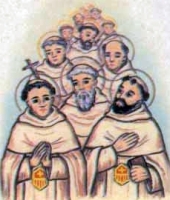
Several Mercedarians from the Santa Maria convent of Avignon, France who worked with plague victims in that city, and died of the disease themselves.
Avignon, France of plague
https://catholicsaints.info/mercedarian-fathers-of-avignon/
• Felicia de Montmorency
CatholicSaints.Info Portable Edition